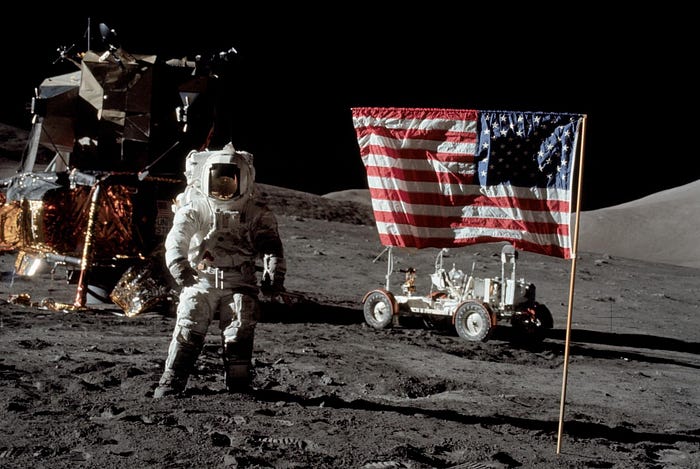Member-only story
Lunar Race I: A bit of history
I am a post-Apollo baby. Throughout my career, I’ve listened to the stories of senior researchers about how they watched men walk on the moon and thus became astronomers or planetary scientists. Me? I watched science fiction and decided if I wasn’t going to fly among the stars, I’d study them instead.
Over the years, I’ve heard a fairly consistent tale from those elder scientists — they thought they’d grow up to live in a world where space exploration was just an everyday experience; one that included the same kinds of research stations on the Moon that we’ve had so long in Antarctica. While they didn’t get to see this kind of exploration in the prime of their careers, it seems they may be building this kind of reality, as a parting gift, for the generations behind them.

Right now, NASA has plans to land four humans on the south pole of the Moon no earlier than September 2026. Parallel to the US efforts, China is looking to land 2 humans by 2030, and India is working toward launching their first humans to space on locally constructed hardware in the next few years as they too work toward potentially putting people on the Moon. This new space race is leading to next-generation hardware development as well as the funding of science in support of these future landings.
